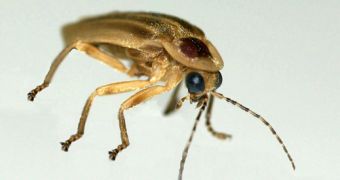Fireflies are interesting little insects, among the few animals capable of generating their own light. They brighten up any night, which is probably why scientists from the University of Namur in Belgium started to look at them more closely than usual.
Or rather, the researchers from the University of Namur in Belgium have begun to thoroughly study their bellies.
As people may or may not know, fireflies generate light in their sizable abdomens. What they might not know, is that there is a good reason the light is seen outside their bodies.
Fireflies don't actually have glowing scales. The light they produce comes from inside the lower abdomen and is green, pale-red or yellow.
To maximize the light that shines forth, lightning bugs have uneven, misshapen even, abdominal scales that act to reduce reflection.
The research team we mentioned before means to copy, or somehow mimic, that trait in their new LEDs.
If they can somehow make LED shine brighter without having to increase the power requirements, a whole new realm of possibilities will be opened on the display industry.
Of course, it will take a while to sort things out, just like it took a while to study the microscopic structure of the abdomen of a firefly found in Panama.
For those who want details, the exoskeleton in that region of the body has jagged scales with sharp edges. Those edges are what the research aims to copy for light emitting diodes.
So far, a standard gallium-nitride LED was given a layer of similarly jagged material. The results were encouraging, as the brightness increased by 55 percent.
It will take some time for all existing LEDs to be redesigned in this way, and the overall benefit in luminescence might not be as high as in this one test run.
Nevertheless, the technological advancement is considerable, especially when taking into account the amusing fact that fireflies use their glowing abdomens to attract mates.

 14 DAY TRIAL //
14 DAY TRIAL //